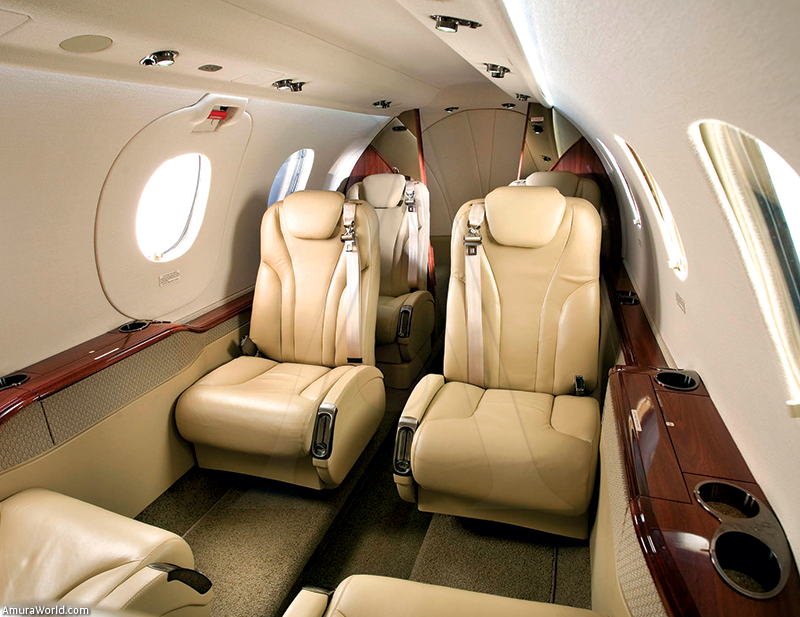State of the Art
The firm Hawker Beechcraft could not stay behind in the segment of the Light Jets for one pilot and that is why they made the launch of the Premier II, from which it is expected to be the largest, of greater fulfillment and most advanced –technologically speaking– in its category.
This new jet will keep the line of the successful Premier IA, characterized by its comfortable interiors, in addition of its liability and efficiency.
The expectation provoked by the Premier II in the jet market was such, that after its official presentation during the European Business Aviation Conference and Exhibition (EBACE) in Geneva, Switzerland, they received 40 orders in definitive, besides the contact with 30 possible clients.
The Premier II will be characterized by its high cruise speed of 861 kilometers per hour, a 20 per cent larger class with four passengers and an increased load capacity, at the same time it offers a bigger cabin and technologically more advanced for a business jet of one pilot.
“For 75 years our company has been at the top of the private aviation and of the business jet”, Jim Schuster, president and CEO de Hawker Beechcraft said during the presentation. “The Beechcraft Premier II redefines the light jet market and takes it to a new level to accomplish the customer’s expectations. With its unbeatable fulfillment and efficiency, impressive cabin space and advanced technology, it is the natural choice for those who want to travel with comfort and to arrive fast to their destination.”
Major Power
The Premier II will be impelled by two turbofan motors FJ44-3AP, the newest of the Williams International motors family, which produce a total of 6 thousand pounds drive–an increase of over 23 per cent in relation to the Premier IA.
Combined with a pair of elliptic winglets, the new generation motors will allow the Premier II to go to a maximum cruise altitude of 13,716 meters (45,000 feet) without a restriction and to fly farther –2,778 kilometers (1,500 nautical miles) with a pilot and four passengers, with 362 kilograms of freight.
This increase in the operation ceiling will also put the passengers above the traffic and weather, making them possible to enjoy a smoother trip and to reach their destination faster. Besides, it is saving the owners and operators time and money.
The fuselage will be made in last generation composite, which makes you feel that you are traveling in a mid-size cabin with the costs of a small cabin.
Changes in the Cabin
The cabin of the Premier II will caress the passengers with luxury and comfort; the pilot’s cabin will offer an advanced level of operational sophistication and situation prevention–all that you may expect in a jet designed to be flight by a pilot, who will have the latest in aircrafts with the Collins Pro Line 21 equipment integrated by three LDC monitors of 8 x 10 inches.
The standard seats are luxurious and comfortable for up to six passengers conveniently seated, feeling as they were on board of a mid-size jet; in addition they will have a private bathroom and space for the hand luggage.
The first flight of the aircraft is programmed for April of 2009 and it is expected to receive the FAA Certification for the second quarter of 2010, while the EASA certification (European Aviation Safety Authority) could be granted the last quarter of 2010, before starting the regular flights in the jet for one pilot, taller, farther and faster in its category.
Technical Data
WEIGHT
Maximum in Ramp
12,590 lb
Maximum at Take-Off
12,500 lb
Maximum in at Landing
11,600 lb
Maximum without Fuel
10,000 lb
Fuel Capacity
3,670 lb
DIMENSIONS
Cabin
Large
13 ft 6 in
Height
5 ft 5 in
width
5 ft 6 in
Volume
85 ft3
Passengers Cabin
315 ft2
OPERATION
Take-Off
Runway in Regular Conditions
3,792 ft
Landing
3,170 ft
Ascent
41,000 ft / 17 min
Maximum Speed
0.80 Mach
Cruise Velocity
451 kt/519 mph
Full Tank with Total Freight
490 lb
Range
1,369 nm
Speed Average
408 kt
Passengers
800 lb
Range
1,195 nm
Speed Average
403 kt
Text: Laura Velázquez ± Photo: Hawker Beechcraft.



